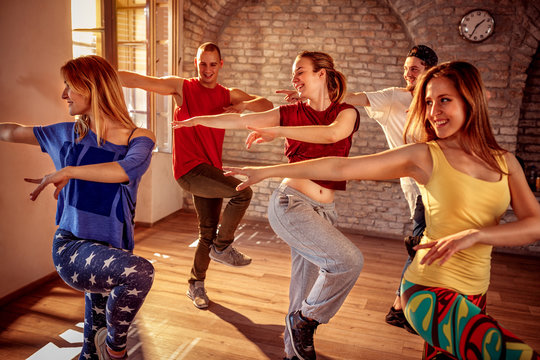
Unleashing the Rhythm: The Zumba Fitness Phenomenon
In recent years, the fitness world has witnessed a surge in popularity for an exhilarating and energetic workout known as Zumba Fitness. Combining dynamic dance moves with infectious music, has become a global sensation, captivating individuals of all ages and fitness levels. This article delves into the captivating world of Zumba Fitness, exploring its origins, benefits, and why it has become a beloved fitness trend around the world.
The Birth of Zumba
is a popular fitness program that combines dance and aerobic exercises. It was created by Alberto “Beto” Perez, a Colombian dancer and choreographer, in the 1990s. The story of the birth of Zumba is quite interesting.
In the mid-1990s, Beto Perez worked as a fitness instructor in his hometown of Cali, Colombia. One day, he forgot to bring his usual workout music to his fitness class. In a moment of improvisation, he grabbed some tapes from his car, which happened to be a mix of salsa and merengue songs. Beto used this music to create a new dance-fitness routine on the spot, incorporating his own choreography.
To his surprise, the class loved the new routine, and they found it to be a fun and exhilarating way to work out. Realizing that he had stumbled upon something special, Beto decided to develop and refine this dance-fitness concept. He spent the next few years fine-tuning the routines and sharing them with fitness enthusiasts.
In 1999, Beto moved to the United States, specifically Miami, Florida, where he introduced his dance-fitness program to a wider audience. He teamed up with entrepreneurs Alberto Perlman and Alberto Aghion to officially launch Zumba Fitness LLC. They started offering instructor training programs to spread the Zumba craze further.
Types of Zumba
Zumba quickly gained popularity, not just in the United States but worldwide. The energetic and engaging nature of the workouts, combined with the infectious music and dance moves, attracted people from all walks of life. Zumba classes were no longer just traditional fitness sessions but became social and interactive experiences.
Over the years, has evolved and expanded its offerings. Today, there are various Zumba programs tailored to different fitness levels and preferences, including Fitness, Toning, Aqua , Gold for seniors, Kids, and more. has also incorporated other dance styles and fitness elements to keep the workouts fresh and exciting.
The birth exemplifies how an accidental mix-up and a passion for dance and fitness can lead to the creation of a worldwide phenomenon. It has transformed the way people view exercise, making it a joyful and enjoyable activity that promotes health and well-being.
Benefits of Zumba Fitness:
Zumba Fitness offers numerous benefits that contribute to overall health and well-being. Here are some key benefits of engaging in Zumba workouts:
Cardiovascular Health: Zumba is a high-energy, aerobic workout that gets your heart rate up and increases cardiovascular endurance. The continuous movement and variety of dance routines help improve circulation, strengthen the heart, and enhance lung capacity.
Calorie Burning and Weight Loss: Zumba is an effective calorie-burning activity. The combination of dance movements and aerobic exercises helps you burn a significant number of calories in a single session. Regular participation in classes can contribute to weight loss and the reduction of body fat.
Full-Body Workout:
Zumba engages multiple muscle groups throughout the body. The dance routines involve various movements like squats, lunges, twists, and arm movements, providing a comprehensive full-body workout. It helps tone and strengthen muscles, including the core, legs, arms, and glutes.
Improved Coordination and Balance: Zumba incorporates choreographed dance moves that require coordination and balance. As you learn and practice the routines, your coordination skills improve, leading to better body control and enhanced balance. This can have a positive impact on your daily life and activities.
Increased Flexibility and Range of Motion: Zumba involves a wide range of dynamic movements and stretches that promote flexibility. Regular participation can help improve joint mobility and range of motion, enhancing overall flexibility and reducing the risk of injury.
Stress Relief and Mood Enhancement:
Zumba is known for its upbeat music and positive, energetic atmosphere. Engaging in Zumba workouts releases endorphins, the feel-good hormones, which can help reduce stress levels and elevate mood. It provides an outlet for self-expression, allowing participants to let go, have fun, and enjoy themselves.
Social Interaction and Community: Zumba classes offer a social environment that encourages interaction and connection. It provides an opportunity to meet new people, make friends, and develop a sense of community. The supportive and inclusive atmosphere can boost motivation and adherence to regular exercise.
Cognitive Benefits:
Zumba workouts involve learning and remembering choreographed dance routines, which can stimulate cognitive function and improve memory. The mental engagement required during the classes can help enhance focus, concentration, and mental agility.
Adaptability and Accessibility: offers various programs and modifications to accommodate individuals of different fitness levels, ages, and abilities. Whether you are a beginner or an experienced exerciser, Zumba can be adapted to suit your needs and fitness goals.
Fun and Enjoyment: Perhaps one of the biggest benefits of Zumba is the sheer enjoyment it provides. The energetic music, dance moves, and lively atmosphere make it a fun and entertaining way to exercise. The enjoyment factor often leads to increased motivation and consistency in maintaining an active lifestyle.
The Essence of Zumba
is a dynamic and exhilarating dance fitness program that combines various Latin-inspired dance styles into a single workout. It embraces the essence of joyful movement, encouraging participants to let loose and have fun. The heart of Zumba lies in its fusion of energetic choreography and infectious music, creating a vibrant and inclusive atmosphere. With its easy-to-follow routines, Zumba allows people of all fitness levels to join in and experience the thrill of dancing while getting a full-body workout. The essence of Zumba can be summed up as a celebration of movement, self-expression, and pure enjoyment.
Zumba Beyond the Dance Floor
Zumba’s influence has extended beyond traditional dance classes. The program has branched out to include specialized variations such as Aqua Zumba (performed in water), Toning (incorporating lightweight toning sticks), and Zumba Gold (catered to older adults or those with limited mobility). Additionally, Zumba Fitness has released home workout DVDs, video games, and online streaming platforms to cater to individuals who prefer to exercise in the comfort of their homes.
Is Zumba Good for Weight Loss?
Yes, Zumba can be an effective form of exercise for weight loss. is a high-energy fitness program that combines dance and aerobic movements with lively music. It provides a full-body workout that can help burn calories and increase cardiovascular endurance.
One of the primary factors contributing to weight loss is creating a calorie deficit, which means burning more calories than you consume. can be an excellent calorie-burning activity because it involves continuous movement and engages various muscle groups. The intensity of the workout can vary depending on your effort, but it generally involves constant movement and can elevate your heart rate.
The number of calories burned during a Zumba session will depend on several factors, including your weight, intensity level, and duration of the workout. On average, a person weighing around 160 pounds (73 kilograms) can burn approximately 400-600 calories per hour of moderate-intensity Zumba.
In addition to calorie burning, can also help improve overall fitness and muscle tone. The dance moves and routines involve a combination of aerobic exercise, resistance training, and interval training, which can help strengthen and tone various muscle groups.
However, it’s important to note that weight loss is also influenced by other factors, such as diet and overall lifestyle. While Zumba can contribute to weight loss, it’s generally recommended to combine it with a balanced diet and other forms of exercise for optimal results. It’s always a good idea to consult with a healthcare professional or a certified fitness instructor before starting any new exercise program, especially if you have any underlying health conditions or concerns.
What Muscles Does Zumba Work?
While Zumba offers a total-body workout, it primarily targets the muscles of the legs and core. “You’ll likely be doing a lot of shuffling side to side and hopping and stepping forward and back, which will engage your quads, calves, hamstrings, and glutes,” Curry says.
Depending on the style of the class and instructor, you may be doing a lot of upper body movement, too, she says.
Zumba fitness has transcended the boundaries of traditional workouts, transforming exercise into an exhilarating and joyous experience. With its fusion of music, dance, and fitness, Zumba has inspired millions to embrace an active lifestyle and enjoy the many physical and mental benefits it offers. As the phenomenon continues to thrive and evolve, remains a testament to the power of movement, music, and community in achieving overall well-being.






